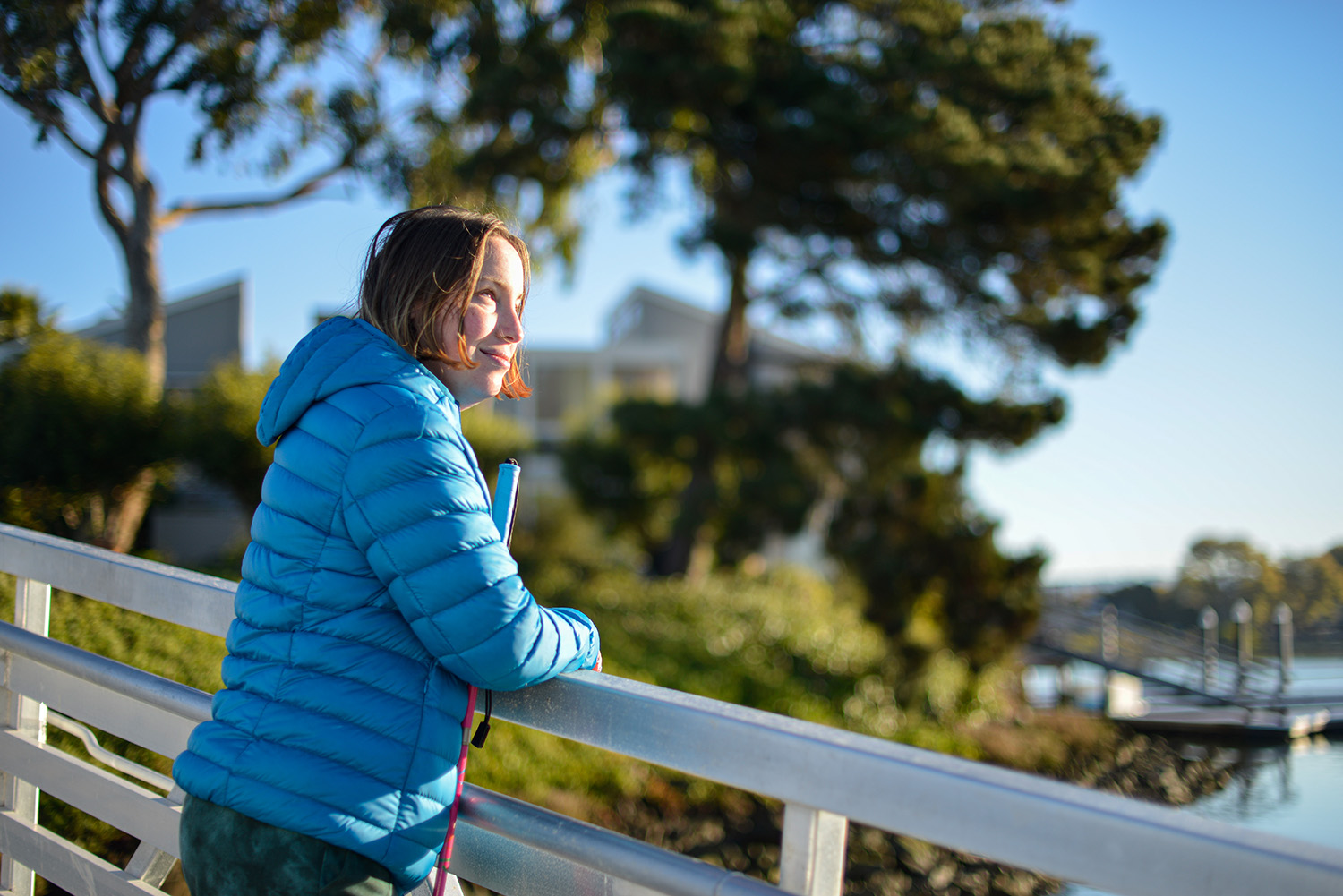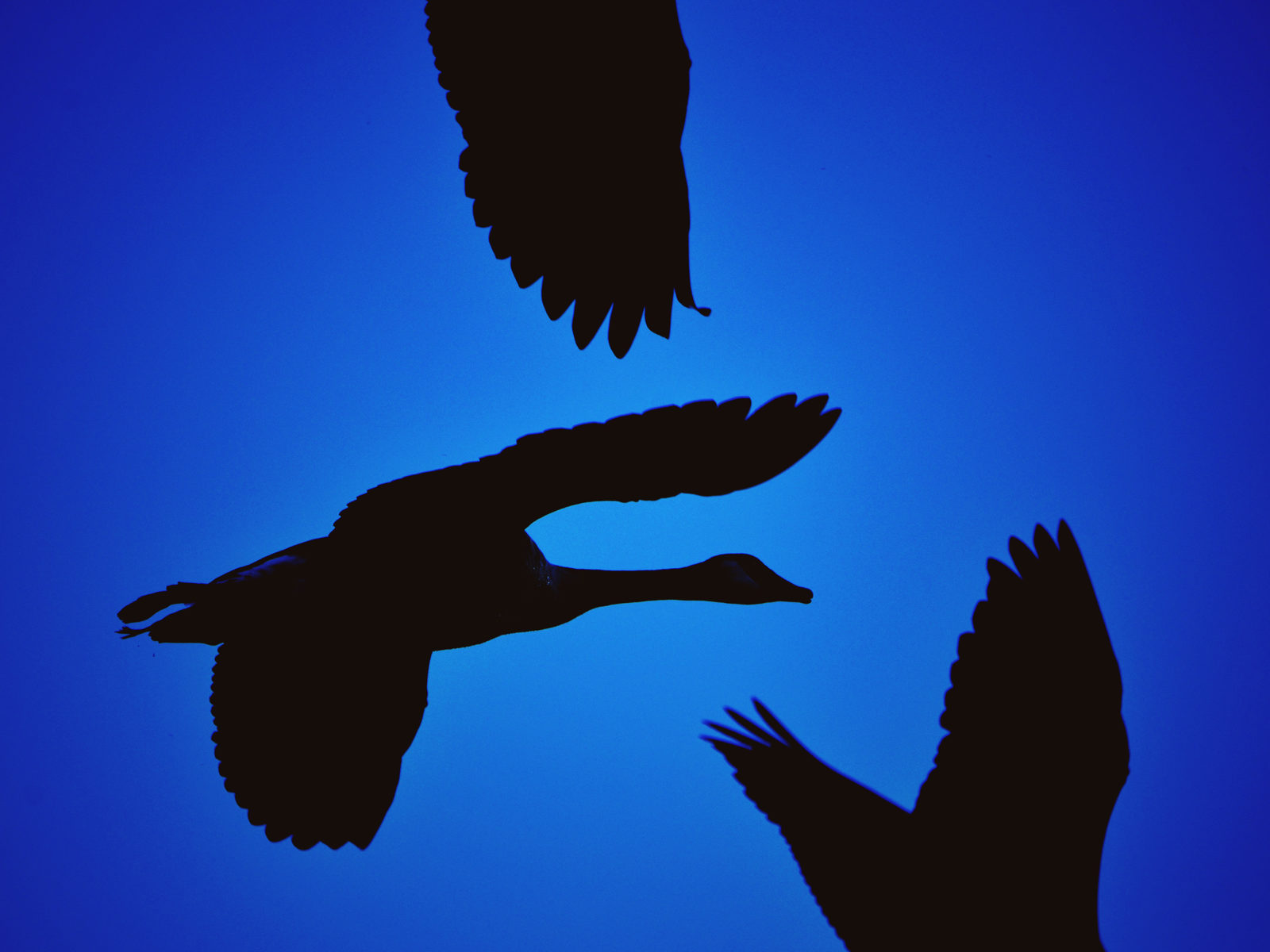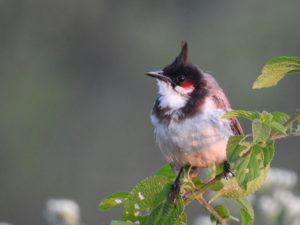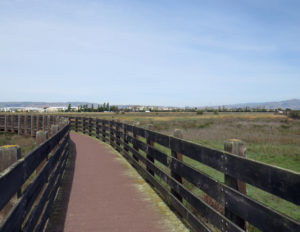I: Poetry
It is October, fall is falling, and Susan Glass sets her morning coffee down on her patio, anticipating the flutter of feathers. She is awaiting the arrival of the golden-crowned sparrows from Alaska, which will keep her company through the winter. “My listening to birds when the sun comes up is what sunrise is to you,” says Glass, who was born blind. “I just love following those sounds around.”
Learn to listen
Five resources for starting to bird by ear
- Access Northern California: Birding for All
- Birdability Resources for visually impaired birders
- Audubon Birding by ear
- Oakland Museum of California Listen to bird sounds online
- Golden Gate Audubon Society: Birding for Fledglings
Caws, hoots, trills and squawks, shrieks and chirps form some of Glass’s earliest memories. They introduced her to the world outside. From an early age, she used them to orient herself.—she could perceive light but not color. The dimensions of the outdoors came to her through birdsong. The world of song awed her: “I used to believe … that the birds would go catch the sun in the morning and get it to come up. I thought trees made the racket of sound, until I learned it was the woodpeckers,” Glass says. “I thought that the sky could speak.”
Her mother gave her records of North American birds that formed the background music to whatever she was doing. Christmas gifts of bird feeders and braille bird books came next. Then pet parakeets, cockatiels, a cockatoo. From them, Glass gained a sense of bird size and body structures. Everything sang to her, and she kept listening. “There’s nothing ordinary about any bird. It’s a miracle of wing,” Glass says. “You just keep feeding your ears again and again and again. And pretty soon it starts to implant itself into your imagination.”
Glass began writing poetry, translating these sounds into words. “I think people think that because blind people can’t see, we don’t know birds. But they’re the nearest part of nature,” she says. And so, she says, “I began to want to use the poems to help people hear and see the birds, and to allow people to feel the birds.”
Recently, she went to the Sacramento Delta to hear the sandhill cranes, which winter over in its flooded fields. The experience was an immersion in the cranes’ world: “They filled up the soundscape—from distance to close to everywhere,” Glass says. “Just when you were right on top of them, that was the only sound you could hear. It was like the air was singing, as if the air was an orchestra, and it was singing to us. It had resonance, it had melody, it had high notes and it had rhythm. It was everything all happening at once.”
Glass takes me back to her morning ritual, with a poem. Her voice lilts across the phone, as if there is no distance between us:
A Bewick's Wren is singing in a sky space just beyond my patio. I slide open the French window, step into delicious cold, and know this is where I'll drink the day's first coffee. His melody is symmetrical, practiced. "Lalalalala seeee bert," he lilts from an oleander bush, rests three measures, then, "Lalalalalala seebert." His tail must be conducting, a black barred, white tipped baton curved over his back and flicking side to side. Does the tail drive his music, or the music, his tail?
II: Practicality
Tiffany Taylor found birding as an adult. She had to find the places where she could do it, and that took a while. Taylor, who was born legally blind, says she often doesn’t feel welcome in many birding spots or in groups. The problems may seem innocuous to those who bird by eye: people may talk too loudly when a bird is spotted. Or they rush on to find the next bird for the list, instead of staying to hear their surroundings. Taylor had to find her own way.
Taylor is relatively new to birding. She’s not keen on checking birds off lists, or compulsively identifying every bird around her. She just loves being in nature, paying attention to the sounds around her and “enjoying the birds for being birds.” She remembers how, on a trip to Germany, she heard birds calling in early dawn, while all the humans and their enterprises still slept. How their songs felt like an unexpected gift sneaking into her mornings. Nowadays, she and her partner wake up to the cooing of pigeons and the squabbling of seagulls outside their Alameda-based sailboat.
Over time, she has created a list of Bay Area places she and her partner, who is sighted, like to visit while driving around in their RV or on hikes—places that are unusually accessible to a visually impaired birder. There is a tenderness to this togetherness—Taylor’s partner will often scope out spaces on hikes that they can explore together. On their hikes, her partner will often describe what she sees, so Taylor can associate those descriptions with the sounds. “We kind of figure out how that works for us together,” Taylor says. Their favorites include Lake Chabot in the Castro Valley suburbs, Coyote Lake County Park near Gilroy, and Coyote Hills, in Fremont, where they walk the Meadowlark Trail.
One of her first experiences birding in a group, through the Birding for All Program with Access Northern California, left her wanting to do it more often. It also made her consider what makes for a truly accessible trail. Certain places aren’t accessible to her friends who use wheelchairs, while other trails are tricky to navigate with a cane. “All those kinds of considerations go into the enjoyment of the space,” Taylor says.

III: Patience
When I go birding with Dawn Lemoine in San Francisco, I see her body always turned toward the trees, ears perked under a white canvas hat. Lemoine knows that the art of listening is really the art of waiting in silence.
Lemoine has had vision trouble her whole life. She birds with no usable vision in her right eye, and a left that “has its ups and downs.”
She wasn’t always so patient. When she started birding in 2014, after retiring, she often felt she wasn’t contributing enough on group birding trips. She was trying to see the birds. Other people were always “getting her on the bird,” which in birding parlance means spotting it. Now, she is often the one to find a bird first—by hearing it. She can tell her companions what to look for. Now she can’t imagine birding any other way. “There’s so many birds that you’re not going to see,” she says, “no matter how good your vision is.”
It took a long time to learn to be at ease with silence. At the beginning of the pandemic, she and her birding partner, Yvette MacDonald (who, with Lemoine, now teaches the “Birding for Fledglings” class at the Golden Gate Audubon Society), began going out every day to observe birds. She birded for 544 days straight, without skipping a single day. “That’s how I learned.”
That she and MacDonald were at the same skill level helped them keep going. Under no compulsion to keep moving, they sometimes stood in one spot for 20 minutes—listening, listening, listening, until the bird they’d heard finally popped up, and they were able to then match the sound with the species.
Around the 400-day mark of that streak, Lemoine got surgery on her good eye. By this point, she was really invested in maintaining the streak. Over the next few days, while her eye was patched, she would sit outside in her yard, and ID birds solely based on the sounds she picked up, recording them in eBird. “I felt a real sense of accomplishment that I had come as far as I had in learning to bird by ear during the pandemic,” she says. “It took a lot of frustration away that I had, and added joy.” She still birds by ear, because that’s how she knows them.
Now she’s always ready to take novice birders out, and introduce them to the pleasures of listening: the waka-waka of the acorn woodpecker, or the mimicry of the mockingbird, with a witchity-witchity-witchity here and tschick-a-dee-dee there.





